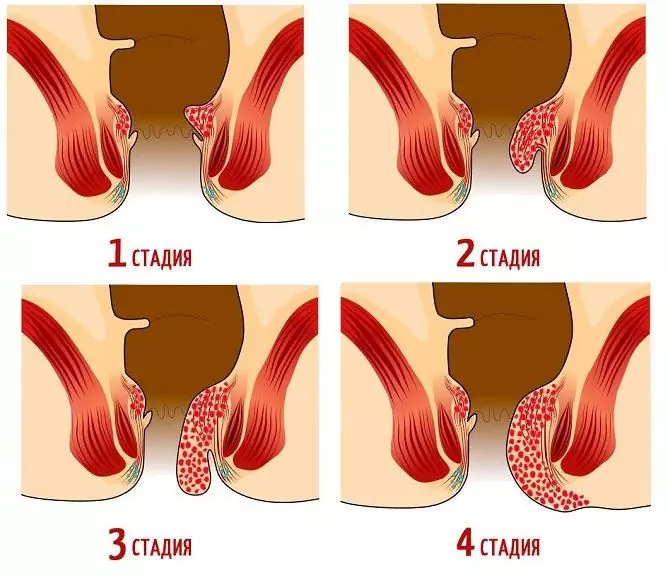- Author Rachel Wainwright [email protected].
- Public 2023-12-15 07:39.
- Last modified 2025-11-02 20:14.
Diet for 4 blood groups
"New people" - this is how people with group 4 are called in the blood group nutrition system. This type is considered the youngest in the evolutionary chain - hence the name.
Note that people with blood group 4 (AB) are the smallest - about 7-8%. Carriers of AB blood have a sensitive digestive system and weak immunity. Their diet should contain foods necessary for the normal functioning of the heart muscle, since these people are prone to cardiovascular diseases. These products include primarily dried apricots, raisins, bananas.
For thermal processing of products, only gentle methods should be used: boiling in water and steam, baking, stewing.
For greater effect, the diet can be combined with moderate physical activity. Aerobics, speed skating, swimming are best suited.

Benefits of a 4 blood type diet
The main advantage of the diet is its effectiveness for weight loss. This is due to the fact that the diet contains only low-calorie foods prepared by dietary methods.
The creators of the blood group nutrition system claim that this diet is favorable for people with cardiovascular pathology.
Disadvantages and contraindications of the 4 blood group diet
According to many nutritionists, the blood type 4 diet is too restrictive, making it difficult to formulate a balanced diet. This can create difficulties for long-term compliance.
The "New People" diet is contraindicated for those who have chronic diseases, expectant mothers, lactating women, as well as children, adolescents and the elderly.
Before starting a diet, you should consult your doctor.
What foods are allowed?
The list of useful foods includes:
- turkey, lamb, rabbit meat;
- pike, hake, tuna, South African sardine, salmon fish, sea bass, sturgeon, cod, mackerel, sailfish, snails;
- eggs;
- low-fat sour cream, kefir, cottage cheese, yogurt, goat milk, goat cheese, homemade cheese, mozzarella and feta;
- olive oil;
- parsley, horseradish, garlic, curry;
- walnuts, peanuts, sweet chestnuts;
- oatmeal, spelled, oat and rice bran, millet, puffed rice;
- wheat and rye bread, rice cakes, whole grain crisps, bread made from soybeans, brown rice, wheat germ;
- dark and red beans, spotted beans, red soybeans, green lentils;
- cucumbers, eggplants, cauliflower and leafy cabbage, sweet potatoes, garlic, celery, beets, parsnips, young beet and mustard leaves, parsley;
- black, green and Concord grapes (and in the form of raisins), bananas, plums, pineapples, grapefruits, cherries, lemons, gooseberries, cranberries, kiwi, fresh and dried figs, dried apricots;
- drinks: green tea, coffee;
- juices from grapes, papaya, black cherry, carrots, cranberries, celery, cabbage;
- decoctions and infusions of hawthorn, rosehip berries, ginseng, echinacea, ginger, licorice root, chamomile, strawberry leaves, burdock, alfalfa.
Neutral products include:
- pheasant meat, liver;
- herring, silver and yellow perch, shark, croaker, striped catfish, carp, smelt, swordfish, sole, scallops, mussels, squid;
- cow's milk 2%, milk whey, hard cheeses;
- soy milk and cheese;
- cod liver oil, linseed oil, rapeseed oil, peanut oil;
- pine and American nuts, pistachios, cashews, macadamia, almonds;
- bread made from spelled, rye meal, wallpaper flour, gluten-free bread, products from durum wheat, wheat bran, oat bran, wheat matzo;
- wheat and rice puree soup, soy granules, wheat bran, shiritsa, barley;
- zucchini, white cabbage, red and Chinese cabbage, rutabagas, pumpkin, turnips, daikon, tomatoes, potatoes, carrots, chicory salad, fennel, green onions, cumin, Spanish and yellow onions, leeks, charlotte, asparagus, greenhouse mushrooms, olives;
- apples, pears, apricots, peaches, nectarines, watermelons, melons, dates, papaya, tangerines, limes, elderberries, lingonberries, prunes, blueberries, blueberries, black and red currants, blackberries, strawberries, raspberries;
- jam and jelly made from the recommended fruits and berries, low-fat salad dressing, mustard;
- drinks: apple cider, white and red wine, water with lemon juice, seltzer and soda water, juices from apricot, plum, pineapple, apple, grapefruit;
- decoctions and infusions of yarrow, elderberry, sage, white birch buds, curly sorrel, mint, dandelion, verbena, thyme, valerian, raspberry leaves, white oak bark, St. John's wort.
What foods are prohibited?
- chicken, veal, beef, pork, duck, goose, venison, buffalo, partridge, quail, heart;
- halibut, eel, beluga, long flounder, striped and stone perch, haddock, anchovies, oysters, frogs, crayfish, shrimps, crabs, lobsters, octopuses;
- whole milk, butter, cheeses - blue, brie, American, parmesan;
- oils - sunflower, sesame, corn, cotton;
- hazelnuts, poppy seeds, pumpkin seeds, sesame seeds and sunflower seeds;
- corn and products from it, buckwheat;
- black and fava beans, lima beans, vegetable and radiant beans, chickpeas;
- radish, avocado, yellow pepper, artichoke, Jerusalem artichoke, hot paprika and earthen;
- oranges, persimmons, mangoes, coconut, pomegranates, guava, rhubarb;
- barley malt, edible gelatin, cornstarch, ketchup, vinegar;
- anise, allspice, capers, cayenne pepper, ground white and black;
- drinks: black tea, alcoholic drinks, orange juice;
- decoctions and infusions of hops, shepherd's purse, fenugreek, coltsfoot, linden, corn stigmas, aloe, gentian, senna, mullein, meadow clover.
Diet menu for 4 blood groups
Sample menu for three days:
Breakfast: oatmeal porridge with cherries and plums, coffee.
Lunch: creamy vegetable soup, salad of cheese, eggs and sardines, seasoned with olive oil.
Dinner: boiled lamb with eggplant and pepper.
Snacks: a handful of nuts, a few fruits or vegetables.
Breakfast: rice porridge.
Lunch: cream soup with broccoli, cauliflower and Brussels sprouts, fruit salad.
Dinner: sea fish julienne, green tea.
Snacks: nuts, dried apricots or prunes, rye bread.
Breakfast: yogurt, pear, sea buckthorn fruit drink.
Lunch: vegetable soup, salad of cheese, turkey, Chinese cabbage and tomato, seasoned with sour cream.
Dinner: baked fish, rice.
Snacks: nuts, fruits, kefir.
Useful Tips
Advice 1: take vitamin and mineral complexes with vitamin C, selenium and zinc.
Tip 2: There should be enough fiber-rich foods (vegetables and fruits) in the diet to improve intestinal motility.
| Diet characteristic | final grade |
| Duration: not defined |
2.5 out of 5 The diet for blood group 4 is focused not only on weight loss, but also on health improvement, therefore it is recommended to include in the diet foods that have a beneficial effect on the heart and blood vessels. |
| Recommended frequency: any | |
| Weight loss rate: | |
| Safety: | |
| Variety of products: |
YouTube video related to the article:
Found a mistake in the text? Select it and press Ctrl + Enter.






